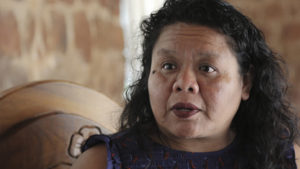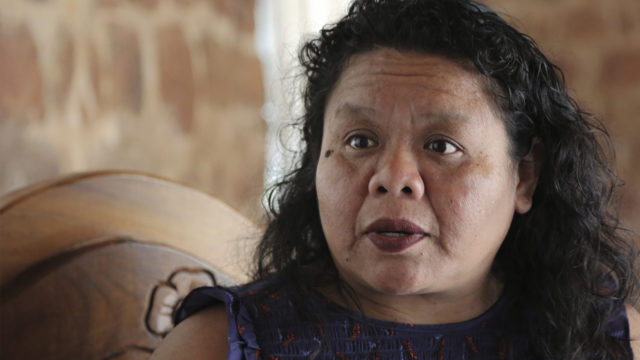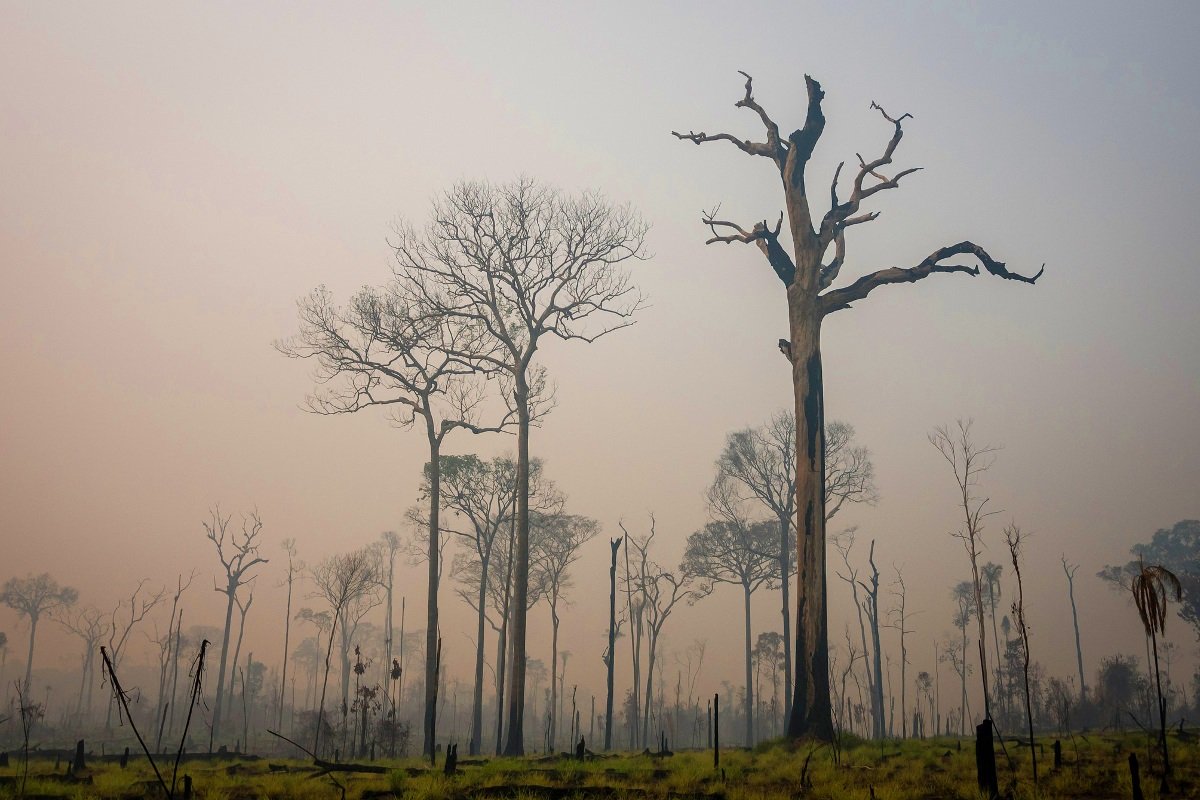A team of 45 journalists from ten countries gathered to investigate episodes of violence against environmental leaders and their communities.
Six out of the ten most hostile countries for leaders and communities defending the environment and their ancestral lands are located in Latin America, according to a Special Rapporteur Michel Forst’s report submitted to the UN in 2016.
A team of 45 journalists, developers and photographers/cameramen from ten countries (Argentina, Bolivia, Brazil, Colombia, Ecuador, Guatemala, Honduras, Mexico, Peru and Venezuela) came together to investigate some episodes of violence against environmental leaders and their communities. Six of these countries sadly belong to that disgraceful list.
Explore featured website Terra de Resistentes
As a result of this research project we have been working on for a year, we crafted a database with 2.367 victimizing events in the last 11 years (2009-2019) and 29 in-depth stories.
A complete image of attacks that occurred during that period of time cannot be provided, as the sub record is enormous. However, our database –built on more than 100 sources, including official entities, press archives, social organizations and field journalism– shows a heartbreaking outlook.
Our Findings

In our research, 2.133 victimizing events against men and women and 234 against communities or organizations defending the environment and the territory were found.
78.7% of events were against men, maybe because they are those who traditionally have held community leadership positions, although we also found 441 attacks against women, including those detailed in the stories about the Pemon leader Lisa Henrito Percy in Venezuela, the Siona leader Martha Liliana Piaguaje in Colombia or the Kichwa leader Patricia Gualinga in Ecuador.
From murders to attacks and even judicial harassment and displacement, they have paid a very high price for defending their right to a healthy environment and protecting strategic ecosystems -jungles, mountains, forests, lakes, rivers and wetlands- within their territories.
Hard-Hit Minorities
Minorities are the target of a very alarming 48% of violence cases (1.146 cases), proving that indigenous and Afro-descendant territories are particularly vulnerable to these criminal interests.
Data show 893 attacks against members of 159 different indigenous ethnic groups, with the Lenca in Honduras being the most attacked (71) the people to which the murdered leader Berta Caceres belonged to; followed by the Guarani-kaiowa (54) and Munduruku (39), both in Brazil. In Colombia, 11 out of 15 affected ethnic groups were declared at risk of extinction by the Constitutional Court.
17 of our reports document attacks and actions against indigenous communities who try to safeguard their ancestral lands –Lenca in Honduras; Kolla and Atacama in Argentina; Pemon in Venezuela; Shuar and Kichwa in Ecuador; Piratapuyo, Tucano, Pijao, Siona, Zenu and Nutabe in Colombia; Guarani-kaiowaa, Munduruku, Karipuna and Uru-eu-wau-wau in Brazil; Raramuri and Odami in Mexico; Trinitarian Moxeño and Torewa in Bolivia; or Ashaninka and Tikuna in Peru.
The database also shows 148 cases of violence against Afro-descendant populations and 105 against the Garifuna, also of African origin, in Honduras. Three of our investigations show attacks suffered by Afro-descendant communities in the Colombian Pacific and in Northeastern Brazil.
What are They Defending and from What?
Although in many cases environmental leaders try to protect more than one natural resource, in this research we took into consideration the main resource they defend.
Likewise, in many cases, leaders and communities have been defending themselves against several kinds of stakeholders. Our investigation only considered the main sectors affecting the struggling communities, ranging from agribusiness, oil production, mining, hydropower and roads to drug trafficking and illegal timber trade.
The main types of violence recorded against the leaders mapped with the database are listed below. In addition, it is worth noting that, in several cases, the leaders or communities fighting for the environment’s defense have suffered more than one victimizing event; therefore, we decided to choose either the most important event or the first recorded.
We found that a significant percentage of the victimizing events have occurred in the vast forests that harbor a great part of the natural wealth making Latin America the world’s most biodiverse region.
Amazonia, the Epicenter of Attacks
More than half of our reports investigated violence against leaders, communities and park rangers in the Amazon region of six different countries.
These 16 reports show how dozens of indigenous territories, ancestral communities and national parks throughout the Amazon basin are being targeted by attacks and criminal interests. In that region, we found and documented cases of settlers invading communal lands, the military attacking indigenous leaders, oil companies omitting responsibility for contaminated water sources, drug traffickers forcing communities to grow coca, park rangers murdered for fulfilling their calling to preserve collective heritage, and fine woodcutters harassing those who protect the species they covet.
The Hardest Part
The most difficult information to collect was the status of cases within the judicial system. We only found conclusive data from judicial decisions (either convictions, acquittals or pardons) in 303 cases (12,8% of the total) showing that the justice administration owes an immense debt to environmental advocates.
In many of these cases, the sentences punish only the perpetrators, but not the masterminds. Such was case with the sentences in Mexico and Honduras to the murderers of Isidro Baldenegro and Berta Caceres, both recipients of the Goldman Environmental Prize.
In any case, for over 1,000 cases –46% of the total-, we found no information on the investigations’ status.
Equally alarming were the findings indicating that, at least in 1,325 cases (or 56% of the total,) reports were filed with the authorities, including State institutions and international bodies, by the victims and their communities.
Our research found that even bringing a case before the Inter-American Commission or Court of Human Rights, the two bodies in charge of watching over human rights in Latin America, does not lead to effective protection measures in all cases.
Tragically, despite popular wisdom indicating that forewarned soldiers should not die in war, violence against leaders and communities has continued or even escalated in five countries –Brazil, Colombia, Honduras, Mexico and Venezuela– which States did not do enough to protect these citizens, despite having precautionary measures or having been alerted on the risk they were under at an international level.
Although our measurement is not scientific but journalistic, the two years with more episodes of violence were 2017 (13.9%) and 2018 (10%,) evidencing the seriousness of the current situation. In 2019, these episodes accounted for 7.4% despite that many of our consulted sources had not concluded their investigations at the time our database was closed. However, the murder of several indigenous leaders in Brazil, Mexico and Colombia in March 2020 shows that not even the economic and public health crisis caused by the COVID-19 pandemic in the region managed to stop violence.
These advocates not only protect the land that gives them life, but also mountains that provide us with water and forests that clean the air from cities. They are being threatened and murdered at a frightening rate.
Each one of them are more than a number. These are their life stories, a life of struggles and resistance.





